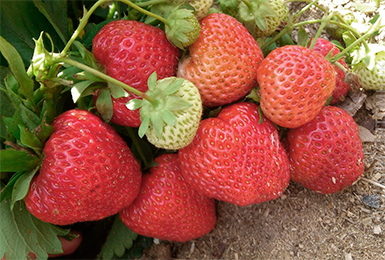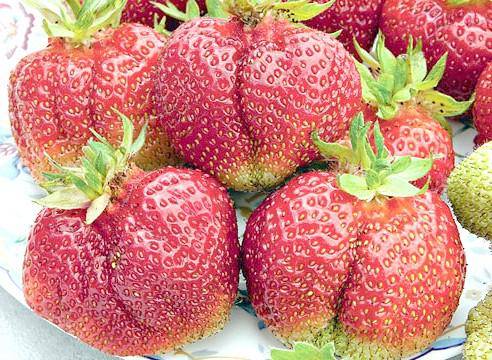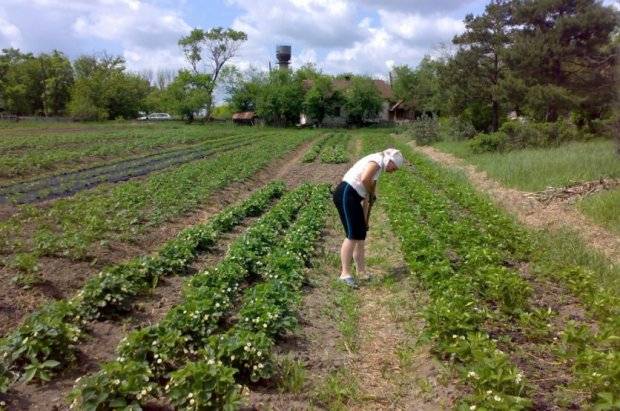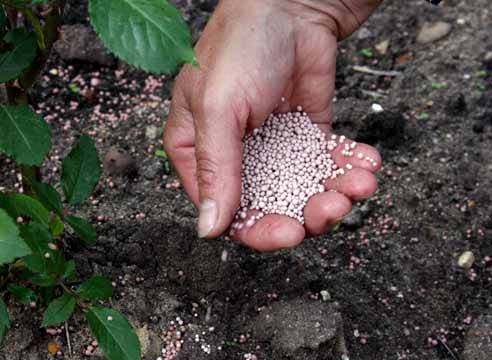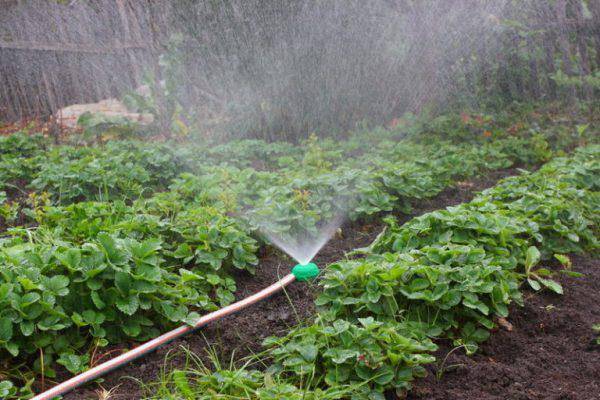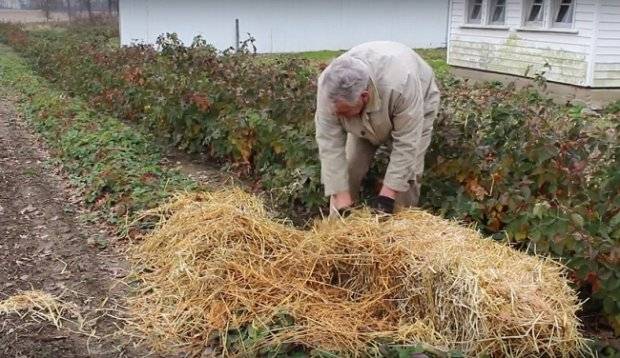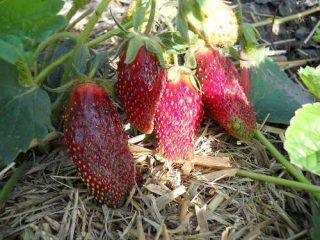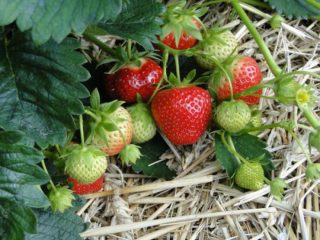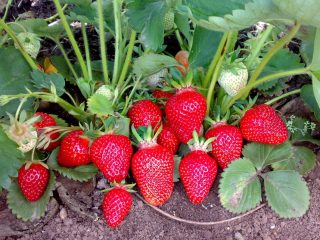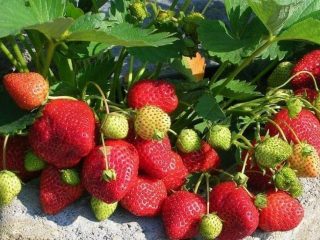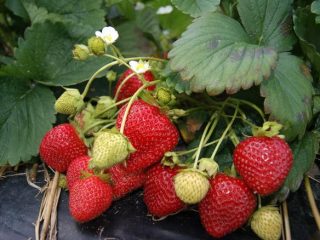Content
Under the brand name of Dutch-bred strawberry Vima, four varieties are combined: Zanta, Xima, Rina and Tarde. They are not relatives. An exception is Tarda, since the Zanta variety was used for crossing. The late-ripening Vima Tarda strawberry is characterized by abundant fruiting and resistance to bad weather conditions.
The main characteristics of the variety
It is better to get acquainted with the description of the strawberry variety Vima Tarda photo, reviews of gardeners, but first we will consider the characteristics. Dutch breeders are trying to breed crops that are inherent in high yields and large fruits. Two well-known varieties were used for crossing: Zanta and Vicoda... The result was a large-fruited Tarde with an average fruit weight of 40 g.
Ripe berries acquire a deep red color with a dark shade. Yellowness appears at the tip of the fruit. The skin is bright, shiny. The shape of the berry resembles a truncated cone. The taste of Vima Tarda is sweet with a bright predominance of strawberry aroma. Berries lend themselves to transportation. The yield per hectare reaches 10 tons.
Like all members of the Vima series, Tarda strawberries form large bushes with highly overgrown stems and dense green foliage. It throws out a lot of inflorescences. Peduncle legs are strong. Most of the ripe berries are held in weight without bending to the ground. Weak mustache growth makes it easier to care for strawberry plantations.
Considering the description of the Vima Tarda strawberry variety, it is worth paying attention to immunity. The culture is winter-hardy, and also tolerates dry summers well. Timely preventive spraying against pests in the future will save you from crop loss.
For a better acquaintance with the variety, consider the quality indicators in the description of Vima Tarda strawberries:
- large Tarda bushes with strong stems emit many peduncles;
- the yield of berries from one bush is from 0.8 to 1 kg of berries;
- fruits grow large in the form of a truncated cone;
- the minimum berry weight is 30 g, the average is 45 g, with good feeding, fruits weighing up to 50 g grow;
- the appearance of small berries at the end of fruiting is not noticed;
- the Vima Tarda variety is capable of overwintering without shelter, but you should not speculate on this dignity;
- the harvested crop lends itself to transportation;
- strawberry Tarda is weakly exposed to fungal and viral diseases;
- fruiting lasts the entire season until the onset of cold weather.
The purpose of the fruit is universal. Tarda strawberries are delicious fresh. The berries are used for making baby puree, preserves, and can be frozen. Compotes are made from strawberries, and also used to decorate cakes and other pastry baked goods.
The video provides an overview of the Tarda variety:
Agrotechnics of culture
An overview of the description of the strawberry variety Vima Tarda, the photo provokes avid gardeners to certainly grow a crop on their site. Before doing this, you need to familiarize yourself with the conditions of agricultural technology.
Features of choosing good seedlings
The Dutch variety Vima Tarda will yield a good harvest if quality seedlings are planted. When buying planting material, pay attention to the following nuances:
- the appearance of the seedling should be fresh without the presence of sluggish leaves;
- a healthy plant has at least three brightly colored leaves on the outlet;
- the diameter of the root collar is at least 6 mm;
- there is no rot, dryness and other damage on the root system and heart;
- the root length of a healthy seedling should be more than 7 cm.
If the seedlings sold meet all the parameters, they will grow into a good strawberry.
Strawberry seedlings are often sold in peat cups. During the purchase, do not hesitate to check the roots. If you lightly pull the bush with your hand, the plant will come out of the cup along with a lump of earth. Bona fide sellers will not mind this review.
Preparing to disembark
After the acquisition of Vim Tarde, the seedlings are prepared for planting. Gardeners are more likely to practice transplanting strawberries in the fall... If it is spring in the yard, then all flower stalks are removed from the seedlings. They will pull nutrients from the plant, preventing it from taking root. In the future, the removal of the first peduncles will affect the yield increase.
It is not known under what conditions the purchased strawberry seedlings were grown. Before planting, it is advisable to harden the seedlings, taking them outside in the shade during the day to fresh air. At night, the strawberries are brought back into the room.
Choose a place for planting seedlings on the south side of the site. The terrain should be flat and maximally illuminated by the sun. In the shade under the trees, the berries will grow sour and rot. Swampy areas are immediately excluded. There will be no chances for strawberries to survive in such conditions.
Nutrient value of the soil and top dressing
The Vima Tarda variety takes root well on light soil with moderate moisture. Gardeners get the best results when growing strawberries on sandy fertilized soils, where the composition contains at least 3% humus. Poor Vima Tarda grows on poor and alkaline soils.
The culture loves moderate moisture, but does not tolerate the presence of groundwater. The location of the layers should not be higher than 1 m, otherwise the root system will rot. When choosing a site, preference is given to the place where peas, parsley or mustard used to grow.
The garden bed is prepared a month before planting the seedlings. The soil on the site is dug up simultaneously with the introduction of a complex top dressing:
- 8 kg of humus;
- up to 100 g of superphosphate;
- nitrogen-containing fertilizer - 50 g;
- potassium salt - 60 g.
The dosage is calculated for 1 m2... Top dressing is dug to the depth of the shovel bayonet. Before planting, the soil is disinfected. The solution is prepared from 10 liters of water with the addition of 40 ml of 10% ammonia and 1 liter of laundry soap solution.
During fruiting, strawberries are fed every 3 weeks with a solution of bird droppings. With the appearance of the first buds and after harvesting, mineral fertilizers are applied.
Watering
When the berries begin to set, the plant loves abundant watering. However, Vima Tarda does not respond well to sprinkling. It is optimal to organize drip irrigation on a garden bed with strawberries. If this is not possible, cover the ground under the bushes with a thick layer of mulch. The cover will retain moisture in the garden bed, which will save you from frequent watering by sprinkling.
Temperature regime
A feature of the Vima Tarda strawberry variety is its resistance to heat. In summer, there will be no problems with plantings. The variety is similarly resistant to frost, but there is a minimum limit of -22aboutC. In the southern regions, the bushes are not covered. You can ignore the procedure in cold regions, provided that the winter is snowy. However, no one can control precipitation and it is better to cover the plantings. Before the onset of the first frost, strawberries are covered with fresh hay, spruce branches or pine needles. If agrofibre is used for shelter, then arcs are pulled over the bed so that the material does not touch the leaves.
Breeding methods and planting rules
The Vima Tarda variety is propagated in two ways:
- Replacing the socket. The method is simple, but it severely injures the plant. A rosette is separated from the mother bush, trying to preserve the bunch of roots along with a lump of earth to the maximum. A new seedling is immediately planted in a prepared hole with fertilizer applied. For about three days, the rosette is sluggish, but after acclimatization it grows.
- A less aggressive way is to use a mustache. The cut off cuttings are placed in cups of water, where potash or phosphorus fertilizer is dissolved. After the roots appear, the seedlings are planted in cups with loose soil. After five days of abundant watering, the cuttings will take root. The seedling is kept in a cup for another 10 days and can be planted in a garden bed. A full-fledged bush will grow in 45 days.
There is a third way of reproduction - by seeds, but gardeners are not interested in it.
In the spring, Vima Tarda seedlings in the middle lane begin to be planted from mid-April to early May. For southern regions, the dates are shifted to mid-March. Autumn disembarkation lasts from late July to early September. Gardeners are more inclined to plant in August. Before the frost begins, the strawberries will have time to take root, and in the spring there will be the first harvest. Fall disembarkation is not suitable for cold, windy regions. Saplings take root badly. If strawberries are planted in spring, the harvest will have to wait longer, but the result will be better.
When planting strawberry seedlings, they adhere to the 35x45 cm scheme.It is undesirable to place it thicker because of the branching of the bushes. At a maximum, with a shortage of space, the distance is reduced by 5 cm. For each Tardy seedling, a hole is dug 10 cm deep. The soil is moistened with water, equal proportions of manure, ash and compost are added. The root system of the seedling is immersed in liquid mud - a chatterbox, placed on the bottom of the hole and covered with soil.
Around the bush, the earth is lightly tamped with hands, another watering is performed and the top is covered with a 3 cm layer of peat or other mulch.
The video shows the autumn planting of strawberry seedlings:
Testimonials
Many gardeners have positive reviews about the Vima Tarda strawberry variety, and now we will be convinced of this with several examples.
